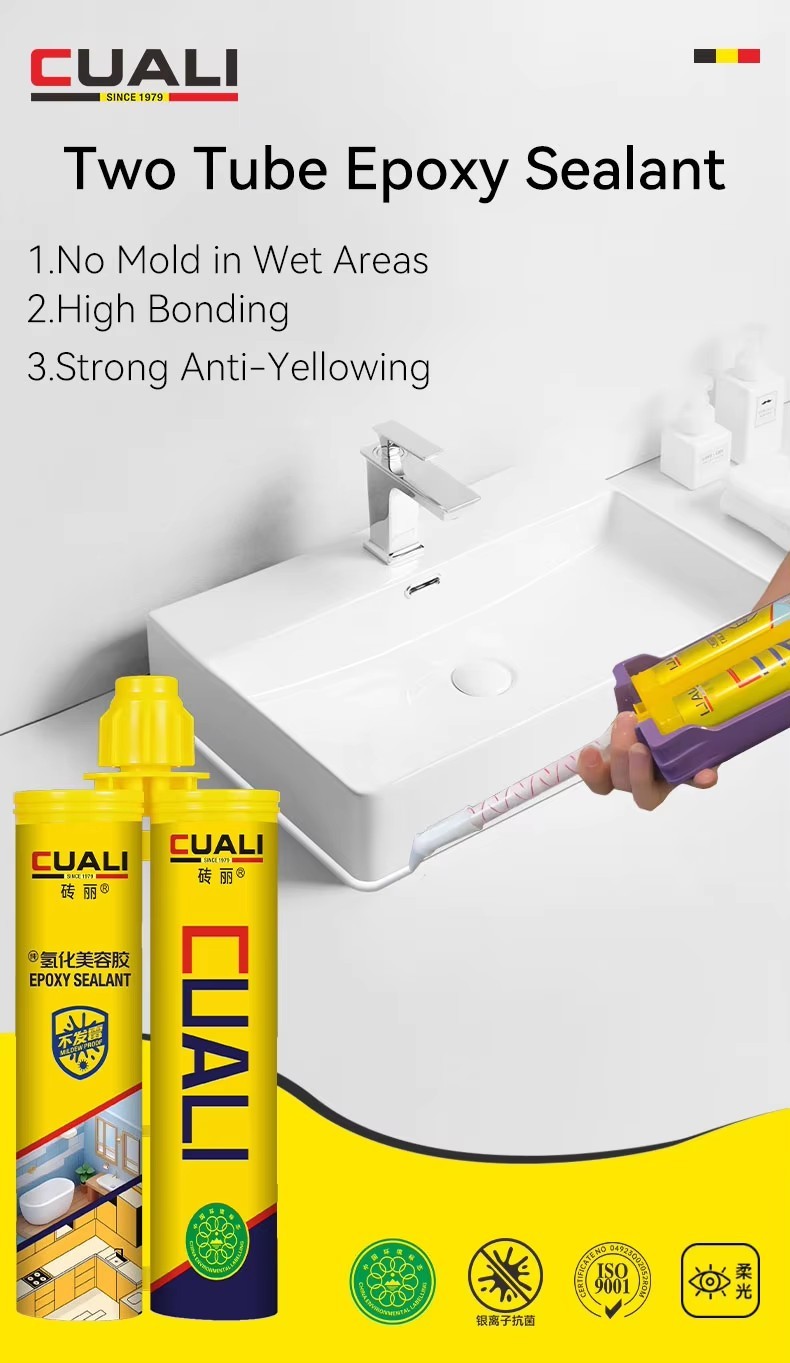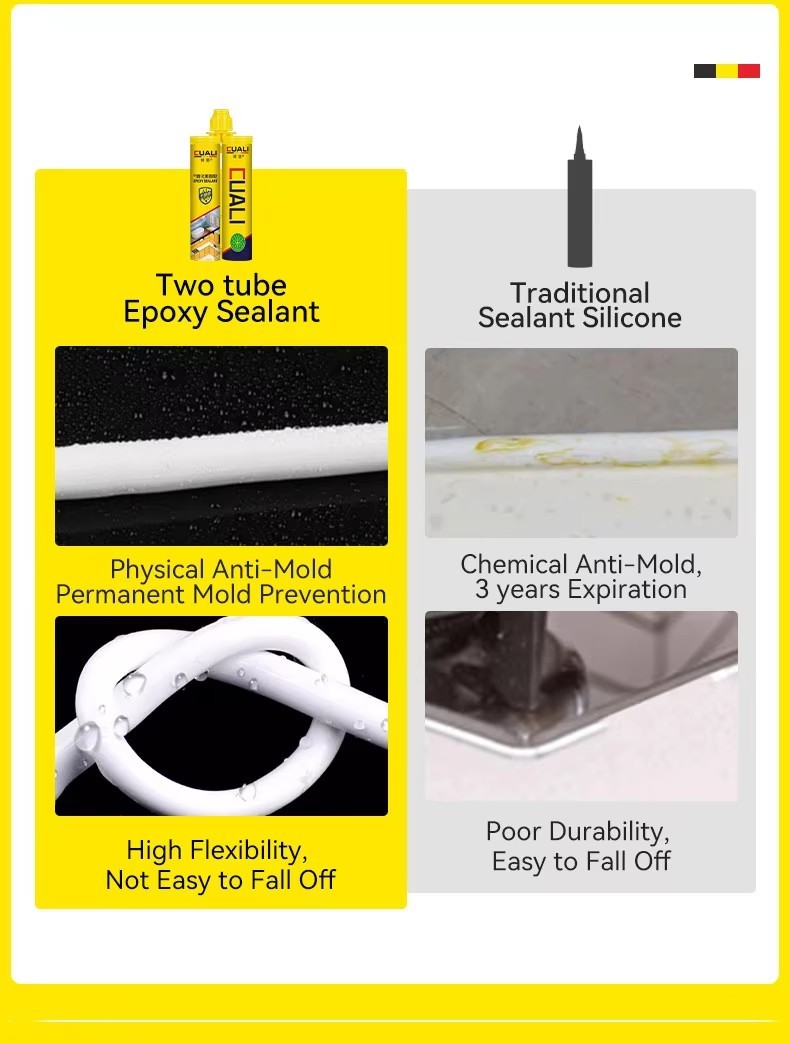
How to choose For Kitchen and Bathroom seam: Epoxy Grout or Beauty Sealant
In kitchen and bathroom renovations, gaps between surfaces—like where countertops meet walls, sinks adjoin cabinets, or toilets connect to floors—are unavoidable. Over time, these gaps trap dirt, absorb moisture, and become breeding grounds for mold, making a reliable edging solution essential.
Epoxy grout, known for its durability in tile joints, is a popular choice for filling gaps. But can it replace beauty sealant for edging tasks? Let’s break it down.
Epoxy grout is formulated for rigid tile gaps. It cures to a hard, inflexible finish, which works well for locking tiles in place but falls short for edging. Kitchens and bathrooms see constant movement: cabinets shift slightly with temperature changes, sinks vibrate when used, and toilets settle over time. This movement can crack rigid epoxy grout, leading to gaps that reaccumulate dirt and moisture.
For edging, a specialized product is needed—enter beauty sealant. Designed to handle flexibility and adhesion in dynamic spaces, it outperforms epoxy grout in key areas.
Why Beauty Sealant Shines for Edging
- Flexible and Shock-Absorbent: Unlike epoxy grout’s rigidity, beauty sealant stays elastic. It can stretch and compress with surface movements (like cabinet expansion or toilet shifts) without cracking, ensuring a long-lasting seal.
- Mold-Resistant by Design: Bathrooms and kitchens are humid, but high-quality beauty sealant (such as CUALI’s) boasts Level 0 mold resistance. It repels moisture to prevent mold growth, whereas epoxy grout, though water-resistant, can develop mold at its edges if gaps form.
- Food-Safe and Eco-Friendly: Top beauty sealants (e.g., CUALI) pass food-grade certifications (like FDA standards), making them safe for kitchen countertop edges where food might touch. Epoxy grout, while non-toxic, isn’t formulated for direct food contact.
- Seamless Aesthetics: Beauty sealant comes in customizable colors to match cabinets, walls, or fixtures, creating a sleek, invisible edge. Epoxy grout’s color options are limited and often clash with non-tile surfaces.

When to Choose Epoxy Grout
Epoxy grout excels at tile-to-tile joints (e.g., shower walls or kitchen backsplashes) where rigidity is needed. But for transitions between different materials—tile to wall, metal to wood, or plastic to stone—beauty sealant is the smarter pick.
CUALI Beauty Sealant: A Standout Choice
CUALI’s beauty sealant combines flexibility with strength:
- It stretches 300% without breaking, handling daily surface movements.
- Its waterproof formula locks out moisture, ideal for shower surrounds and sink edges.
- With 6 color options, it blends seamlessly with any decor, from modern minimalist to warm rustic.
Summary:
Epoxy grout is perfect for rigid tile joints but lacks the flexibility needed for kitchen and bathroom edging. Beauty sealant, designed to adapt to surface movements, resist mold, and match decor, is the superior choice for edging tasks. CUALI beauty sealant, with its blend of durability and versatility, stands out as a reliable solution.
Time:
2025-07-14
More News
